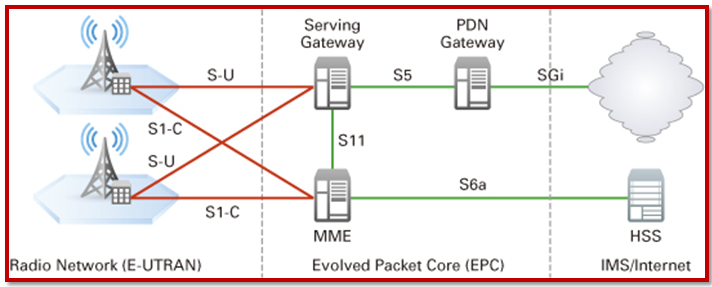LTE Simulation NS3 is the best choice for simulating LTE Projects. It is a 4G wireless communications standard develop by the 3rd Generation Partnership Project (3GPP) that’s design to provide up to 10x the speeds of 3G networks for mobile devices.We provide research projects on LTE Simulation using NS3 Network Simulator.
LTE Facts:
- It’s the successor technology not only of UMTS but also of CDMA 200.
- It supports flexible carrier bandwidth, from 1.4 MHz up to 20 MHz as well as both FDD and TDD.
- LTE is important because it will also bring up to 50 times performance improvement and much better spectral efficiency to cellular networks
- All LTE devices have to support MIMO transmissions, also which allow the base station to transmit several data streams over the same carrier simultaneously.
- QoS mechanism have been standardize also on all interfaces to ensure that the requirement of voice calls for a constant delay and bandwidth, can still be met when capacity limits are reached.
Architecture of LTE:
Parameters considered in LTE Projects:
- Coverage
- Peak data rate in LTE
- Qos
- Latency
- Peak data rate in LTE
- Modulation schemes etc.
Sample code for LTE:
#include "ns3/core-module.h" #include "ns3/network-module.h" #include "ns3/mobility-module.h" #include "ns3/lte-module.h" #include "ns3/config-store.h" #include <ns3/string.h> #include <fstream> #include <ns3/buildings-helper.h> using namespace ns3; int main (int argc, char *argv[]) { CommandLine cmd; cmd.Parse (argc, argv); ns3::ConfigStore::Mode=Save --ns3::ConfigStore::FileFormat=RawText" --run src/lte/examples/lena-first-sim ns3::ConfigStore::Mode=Load --ns3::ConfigStore::FileFormat=RawText" --run src/lte/examples/lena-first-sim Ptr<LteHelper> lteHelper = CreateObject<LteHelper> (); lteHelper->SetAttribute ("FadingModel", StringValue ("ns3::TraceFadingLossModel")); std::ifstream ifTraceFile; ifTraceFile.open ("../../src/lte/model/fading-traces/fading_trace_EPA_3kmph.fad", std::ifstream::in); if (ifTraceFile.good ()) { lteHelper->SetFadingModelAttribute ("TraceFilename", StringValue ("../../src/lte/model/fading-traces/fading_trace_EPA_3kmph.fad")); } else { lteHelper->SetFadingModelAttribute ("TraceFilename", StringValue ("src/lte/model/fading-traces/fading_trace_EPA_3kmph.fad")); } lteHelper->SetFadingModelAttribute ("TraceLength", TimeValue (Seconds (10.0))); lteHelper->SetFadingModelAttribute ("SamplesNum", UintegerValue (10000)); lteHelper->SetFadingModelAttribute ("WindowSize", TimeValue (Seconds (0.5))); lteHelper->SetFadingModelAttribute ("RbNum", UintegerValue (100)); NodeContainer enbNodes; NodeContainer ueNodes; enbNodes.Create (1); ueNodes.Create (1); MobilityHelper mobility; mobility.SetMobilityModel ("ns3::ConstantPositionMobilityModel"); mobility.Install (enbNodes); BuildingsHelper::Install (enbNodes); mobility.SetMobilityModel ("ns3::ConstantPositionMobilityModel"); mobility.Install (ueNodes); BuildingsHelper::Install (ueNodes); NetDeviceContainer enbDevs; NetDeviceContainer ueDevs; enbDevs = lteHelper->InstallEnbDevice (enbNodes); ueDevs = lteHelper->InstallUeDevice (ueNodes); lteHelper->Attach (ueDevs, enbDevs.Get (0)); enum EpsBearer::Qci q = EpsBearer::GBR_CONV_VOICE; EpsBearer bearer (q); lteHelper->ActivateDataRadioBearer (ueDevs, bearer); Simulator::Stop (Seconds (0.005)); Simulator::Run (); Simulator::Destroy (); return 0; }

